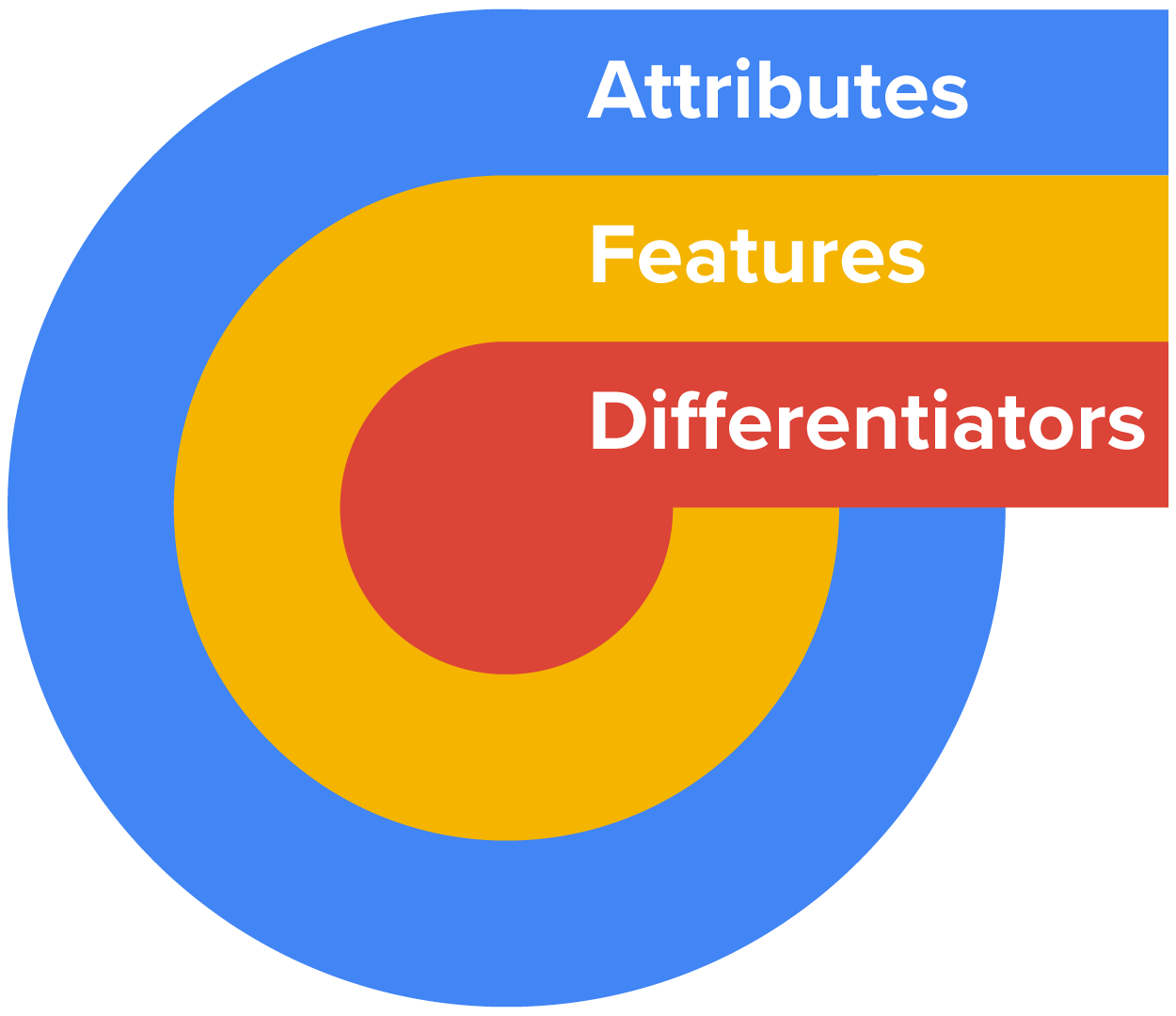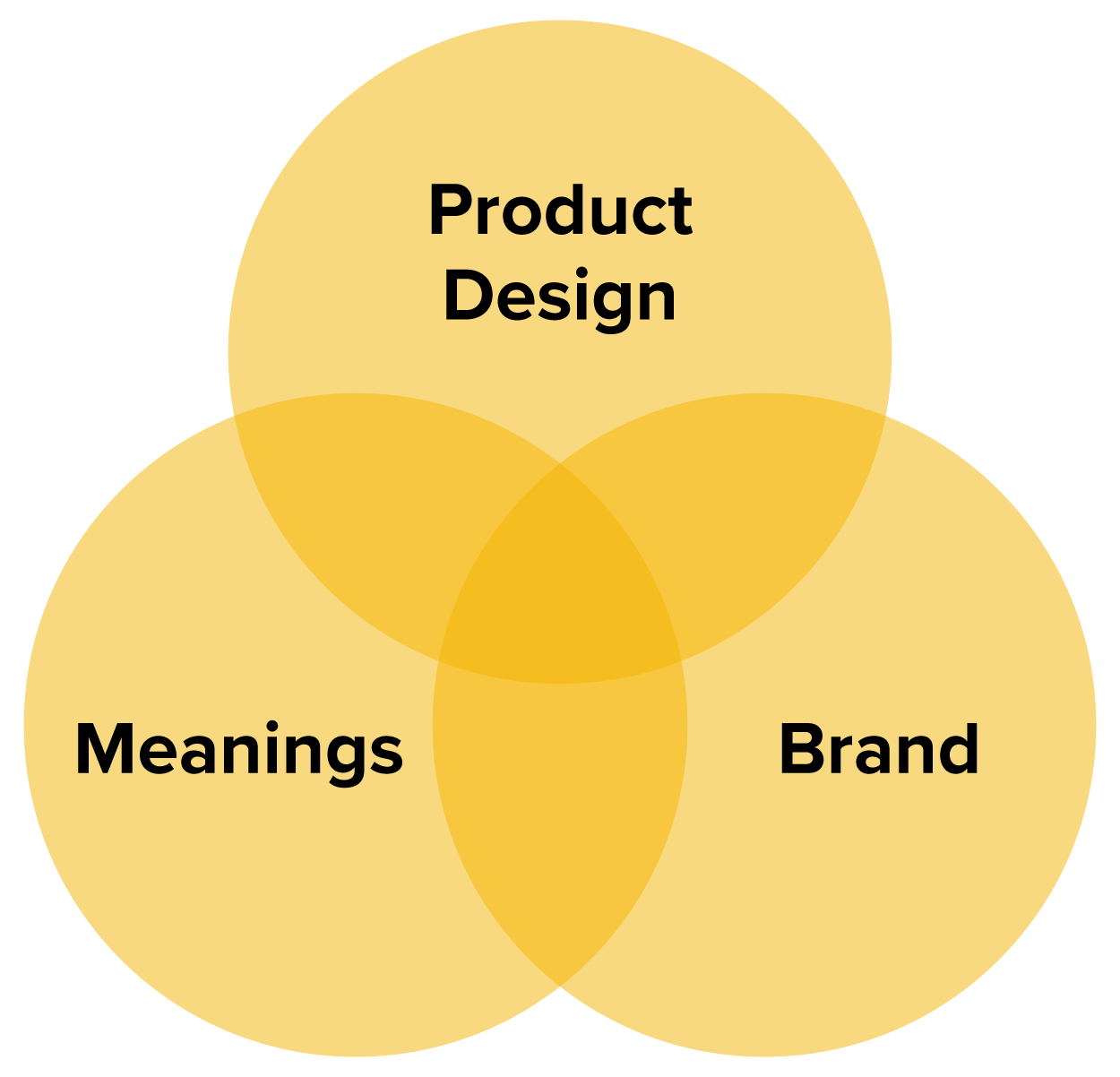Table of Contents |
There are literally thousands of attributes that can be used to define even the simplest products and services. Some will be features—the key selling points of the product or service—but most will not be. A few will fall short of being a feature (that is, it is not a key selling point) but will nevertheless affect the success of the product. For example, the color and weight of an office stapler might not be considered important by the designers, but consumers might like or dislike the product based on those attributes. However, a design process will falter if the designers deliberate over every consideration, including those that have no impact on the function and meaning of the product. So, which attributes should be considered during product and service development?
| Attribute | Description |
|---|---|
| Functions | What does the product do? What important subfunctions does it perform? |
| Target market | What type of customers or customer segment are you trying to attract? |
| Quality | How well does the product or service conform to specifications? Does the product or service do what it says it is supposed to do in the user manual? Is it effective in performing its function? |
| Reliability | Does the product or service perform as it is supposed to over the expected life of the product or service? Is it prone to failure? Is it easily maintained? Can parts be obtained at a reasonable cost and are they easy to change? Does the product perform satisfactorily in a variety of environmental conditions? |
| Ease-of-use | Is the product or service easy to use and can consumers learn how to use it without much trouble? Is the product convenient to use? A convenient product or service is readily available, performs the task for which it was designed, and reduces the time it takes to complete a task. |
| Performance | Is the product smaller than the competition? Is it more powerful? Does the product or service complete a task faster? Is the product adaptable to many situations? |
| Form |
Is the external form attractive? Is the product packaged properly? Does the product suggest a certain meaning? Do the materials used in developing a product also contribute to the overall look and feel? Thus, the meaning of a product is derived from the type and color of the material used to construct a product, the texture and feel of the product, the size, the product name, and from the overall form or style of the product or service. Design attractiveness and innovation also applies to services. Packaging for a service includes the overall look and feel of the service—for example, the user interface and messaging of a smart phone application or website that gives users access to a service will represent the service itself. It is the gestalt or form and configuration of the service as perceived by the consumer. The key success indicator for a service is the customer’s perception of the overall experience with the service process. |
| Technology | Is there an emerging technology or a process that can improve the quality, reliability, ease of use, performance, value, design, and meaning of the product? |
| Value creation | Is there any intrinsic value in the product that significantly distinguishes it from other products or services offered by your company or the competition? Does the product or service solve a problem that consumers want to solve, and will the solution attract them to the product or service? |
| Meaning |
The meaning of a product or service can be thought of as a super-attribute or super-feature that nurtures the inner needs of the individual. Meaning can include anything that supports physical or emotional needs of an individual, whether it is food and shelter or self-image and status. The previous tutorial lists many of the meanings a product or service can evoke. The meaning of a product or service is very much tied into what the product does. For example, communicating is one of the most important and ongoing functions in our lives, and we attach significant meaning to products and services that support communication, such as cell phones. |
The success of any service or product hinges on its ability to meet customer needs and expectations. Establishing and meticulously evaluating key attributes throughout the development process serves as the cornerstone for achieving this objective.
After reading through the list, you can probably notice that there is a significant amount of overlap among the different attribute categories. This is in part related to the imprecision of words in all languages and to the proliferation of synonyms. A diagram illustrating the relationships among words and their meanings would visually depict significant degrees of overlap.
The first diagram shows that “attributes” is an all-encompassing term. A small set of those attributes are features, and the most important features are the differentiators that make the product or service stand out against the competition. However, all attributes must be considered when developing products for consumers.

|
Attributes describe all qualities of a product. Features describe the attributes that customers value. Differentiators are the features that makes the product out distinct from the competition. All differentiators are features, and all features are attributes. |
The second diagram shows that product design is not just about the object or service being developed, but a collaboration between operations and marketing to create a product that evokes the intended brand image and the intended meanings for customers.

This ties in very well with the concept of a brand and MDD. So far, we have referred to brand as the name for a particular line of products, but brand is also the composite of the mental associations that are generated by a company or product. Brand is a gestalt view of the product: It is more than the sum of its parts (the attributes, features, functions, form, design, and meaning). It is the meaning we attach to the product and all the neural associations that are invoked when we think about the product or service. Branding is the intentional cultivation of those meanings by marketing and product designers.

As Gordon tries to conceptualize a brand for his bike, he will think about the range of meanings that consumers might have for the product. There are many overlapping meanings that will bear on the design decisions and on the lateral marketing decisions that help cultivate those meanings in the minds of consumers. Which will be best aligned with his goals? Does he want the bicycle to be a status symbol or an economic and practical purchase? Will it be a way to exercise, a means of local transportation, or a key to adventure? While a bicycle could theoretically be any of these things, design decisions will favor one over the others. Other design decisions may seem arbitrary but will nevertheless meet (or fail to meet) the needs of customers. For example, a bicycle may need to seem “feminine” or “masculine” to be attractive to some customers. On the other hand, abandoning the traditional (and arbitrary) design elements of “boy bikes” and “girl bikes” might be the key to success. In the next few tutorials, we will learn strategies Gordon can use to make the best decisions for success of the product.
Source: This tutorial has been adapted from Saylor Academy and NSCC “Operations Management”. Access for free at https://pressbooks.nscc.ca/operationsmanagement2/. License: Creative Commons Attribution 4.0 International.